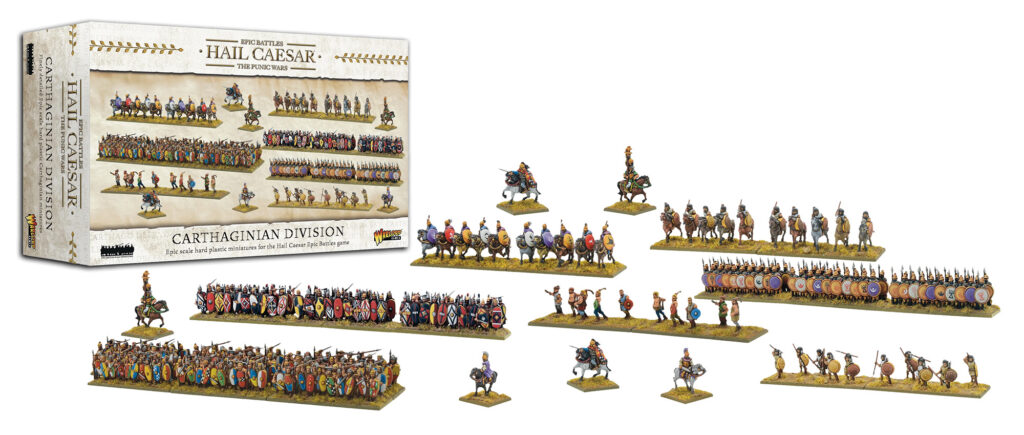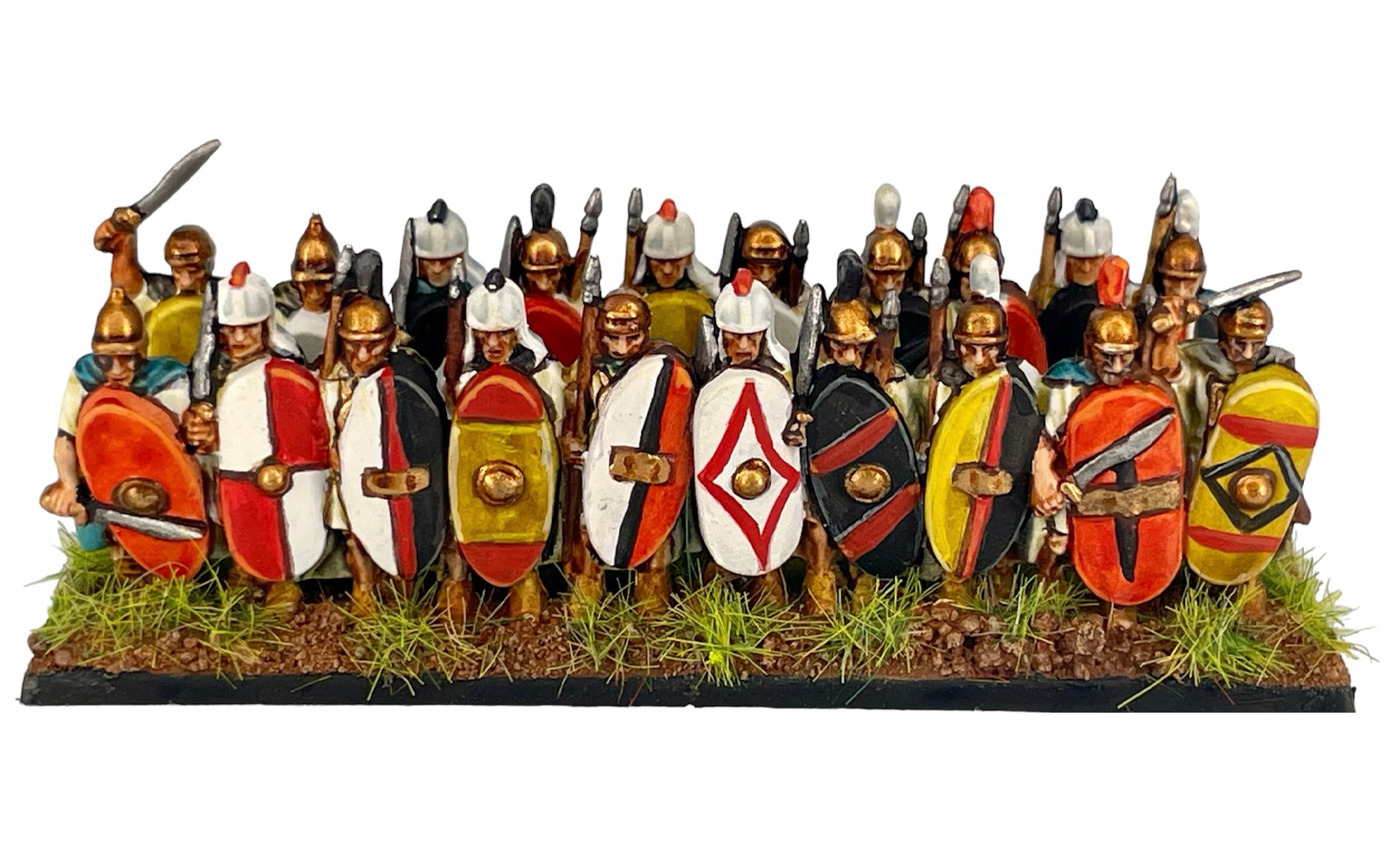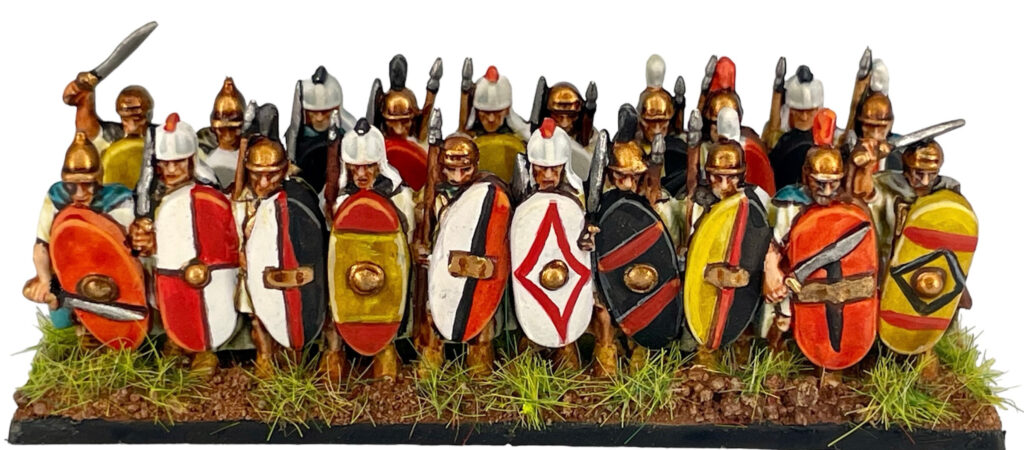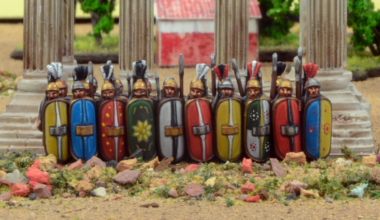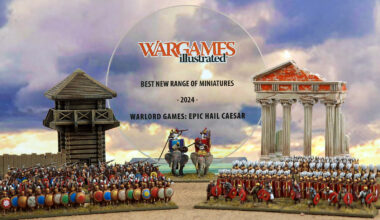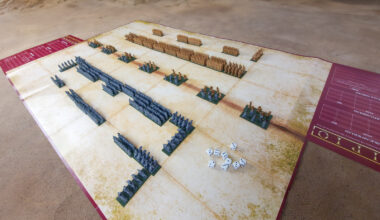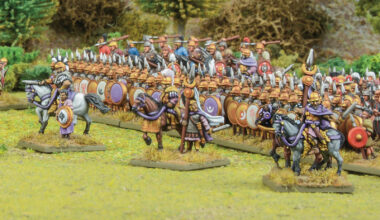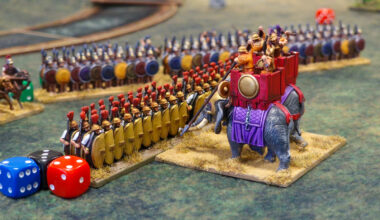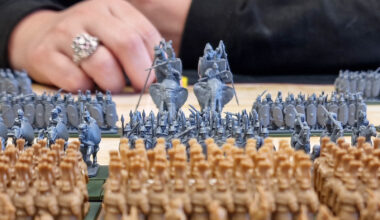Having been more than impressed by Paul Mackay’s miniatures in the past, including some truly fantastic Epic Battles regiments, we asked him if he might be interested in producing some painting guides for our latest epic release, Hail Caesar. He delivered in spades with a whole series of articles.
Previous articles in the series:
One: Numidian Skirmishers
Two: Carthaginian War Elephants
You can also see Paul’s work in the likes of Wargames Illustrated and Wargames, Soldiers & Strategy magazines.
Paul: There are three strips of scutarii on the Carthaginian sprue. As usual I started painting these from a white undercoat, I used Halfords White Primer.
Base Colours
All the base coats in this tutorial are Vallejo Xpress Colors, unless otherwise noted
Skin: I painted all the flesh areas with two coats of Dwarf Skin.
Cloaks: The Greek historian Diodorus notes that they wore black cloaks. I used a few different shades for variety: Hospitallier Black, Greasy Black and Black Lotus.
Tunics: These were all painted with Mummy White.
Shields: I used the following colours for these: Plasma Red, Military Yellow, Vallejo MC Off White and black.
Headgear: The sinew hoods were painted with Templar White and any areas which would be bronze were undercoated
with any brown that was handy on my wet palette. While I was using the brown I
also painted the spear shafts. Crests were painted Plasma Red, Templar White or
black.

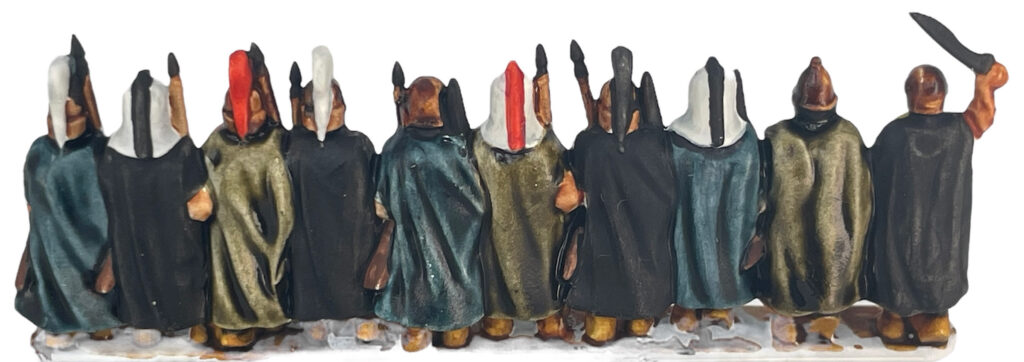
Highlights & Detailing
Skin: This was highlighted with a mix of Citadel Kislev Flesh and Vallejo Game Color Pale Flesh.
Shields and Helmet Crests: After adding some designs to the shields, I then edge highlighted the yellow ones with Vallejo MC Ice Yellow, the red ones with Citadel Fire Dragon Bright and the Black ones with Citadel Dawnstone. I used the same colours to highlight the red and black helmet crests and I used Vallejo MC Off White for the white ones.
Cloaks: The Greasy Black was highlighted by mixing the base colour with Vallejo MC Ivory. I used Dawnstone for the Hospitallier Black and Citadel Sotek Green for the Black Lotus. I also painted black into some of the recesses of the cloth. At this stage I also dark lined the figures where any colour met another. For this I used Citadel Rhinox Hide. I then varnished the miniatures with Vallejo Matt Acrylic Varnish.
Metallics: The bronze areas on the miniatures were painted with Vallejo GC Bright Bronze and then washed with Liquitex Transparent Burnt Umber before being highlighted with the base colour. The spear tips and swords were painted with Army Painter Plate Mail Metal and
highlighted with Citadel Stormhost Silver.


Final Thoughts
The quite simple design of these figures means that with a relatively simple paint job they can be very quickly painted, thanks to the rear of the miniatures being largely taken up by their cloaks. However using some of the highlighting stages as I have described, you can easily elevate them and make them really pop on the tabletop.
Try Your Hand at Painting Scutarii
The people of Hispania were excellent swordsmen, outperforming most foes equipped similarly and able to hold their own against more elite regiments. You’ll find these troops on the plastic Carthaginian sprues, but they actually fall under the Allied Troops list, meaning that Roman and Carthaginian players alike can call upon their services as allies or mercenaries.
Carthaginian Division:
